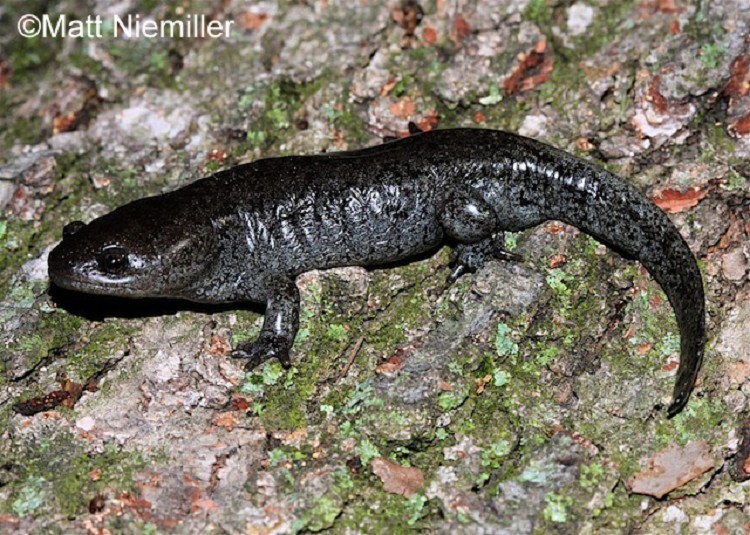Mole Salamander
Ambystoma talpoideumNamed for their habit of burrowing and spending most of their time underground, Mole Salamanders are one of the few salamanders in Tennessee that may exist either as terrestrial adults or as aquatic, gilled, breeding larva.
Description:
Mole Salamanders have a short, stocky body (3 to 4 inches long), rounded head, short tail, and short, stocky legs. They may vary in color from light gray to light brown, dark gray, or black; light gray specks upon the back and sides may be unnoticeable in many specimens.
Similar Species:
None
Habitat:
There are two Mole Salamander types or morphs, each occupying different habitats. Terrestrial Mole Salamanders are most often found in floodplain forests near ponds or other bodies of water.
Terrestrial salamanders often live in burrows in moist soil and leaf litter. Aquatic Mole Salamanders live in permanent ponds with no fish in them.
Diet:
Mole Salamanders are opportunistic feeders and eat a variety of items, including aquatic insects, tadpoles, earthworms, arthropods, and an assortment of other invertebrates.
Breeding information:
Adults breed in temporary to permanent bodies of water that do not have fish.
Status in Tennessee:
This species is deemed in need of management in Tennessee.
Fun Facts:
•Mole Salamanders can live up to 20 years in the wild
•When attacked Mole Salamanders will lash their tails, head-butt, bite, writhe, flee, or feign death to deter predators
Best places to see in Tennessee:
This species is found in the western third of the state, with scattered populations found throughout the rest of the state.
